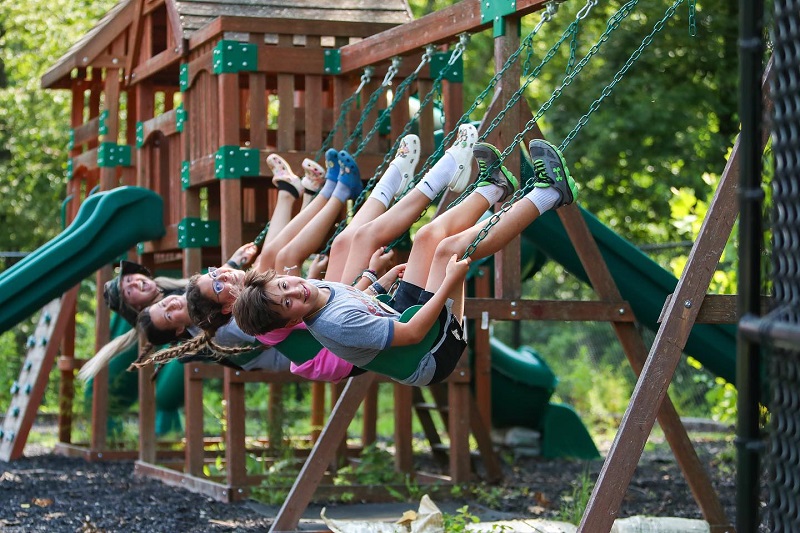
Happy Hollow Children’s Camp: A Journey of Self-Discovery
Happy Hollow Children’s Camp hosts children from low-income homes, and also those with medical challenges, including asthma. The camp is also a haven of outdoor learning for those lucky enough to visit with their school or organization. Unlike other summer camps, Happy Hollow Children’s Camp offers activities that are educational.
Summer camp is important for kids, but then, so is learning, especially in light of the phenomenon known as “summer slide.” The long summer vacation is a necessary break for children, but they forget what they’ve learned in the classroom that year. Staying in the learning headspace helps prevent learning loss. Happy Hollow Children’s Camp manages to keep kids in the learning zone and have fun, and this is what earned this amazing summer camp our small grant award.
We put some questions to Happy Hollow Children’s Camp Development Director Steffany Stoeffler, to learn more about the work of this special summer camp:
Kars4Kids: Can you tell us a bit about the history and founding of Happy Hollow Children’s Camp? How long has it been in operation?
Steffany Stoeffler: Happy Hollow Children’s Camp, for almost 73 years, has provided overnight camping activities at our 855-acre Brown County camp, with a major emphasis on children who are economically underprivileged or have a special medical need, including mild to severe asthma. Happy Hollow also provides outdoor education to groups from schools and other organizations.
Happy Hollow Children’s Camp is truly a transformative summer camp experience that invites children to embark on a journey of self-discovery, learning from nature, their peers, and compassionate adults. At camp, youth build lifelong skills, foster self-respect, manage emotions and trauma, and create cherished memories with new friends.
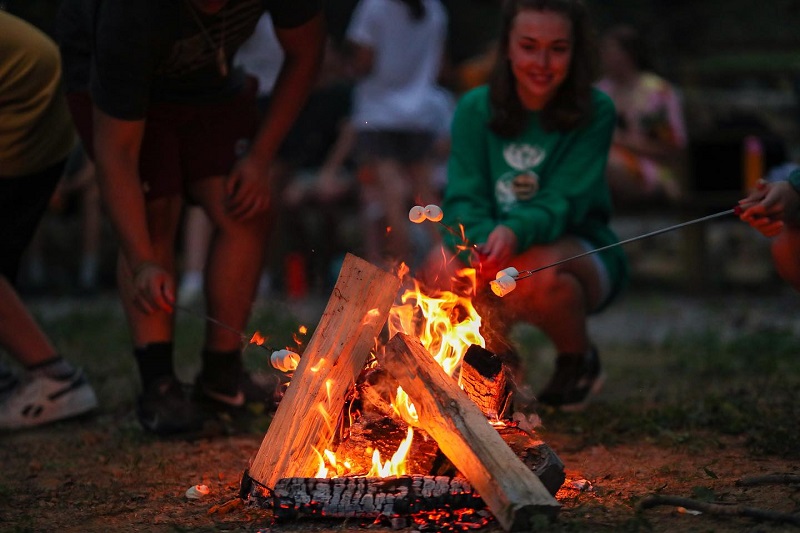
Kars4Kids: How many children have you served through the years?
Steffany Stoeffler: Since Happy Hollow’s founding in 1951, more than 40,000 children (about twice the seating capacity of Madison Square Garden) from Indianapolis and the surrounding counties have attended one of our camp weeklong programs.
Kars4Kids: Can you tell us something about the demographic of the children who attend Happy Hollow?
Steffany Stoeffler: Happy Hollow offers several weekly summer camp programs for children from Indianapolis and the surrounding counties. Our summer camp programs, which run from June to August, are available for children from low-income homes in Marion, Hendricks, Johnson, Hancock, Shelby, Boone, Hamilton, and Morgan counties in Indiana.
Our 2023 summer program served 305 children at camp, ages 6-15 years old. Of the 500 children attending camp, 72% of the children are minorities and 95% of our campers come from low-income households.
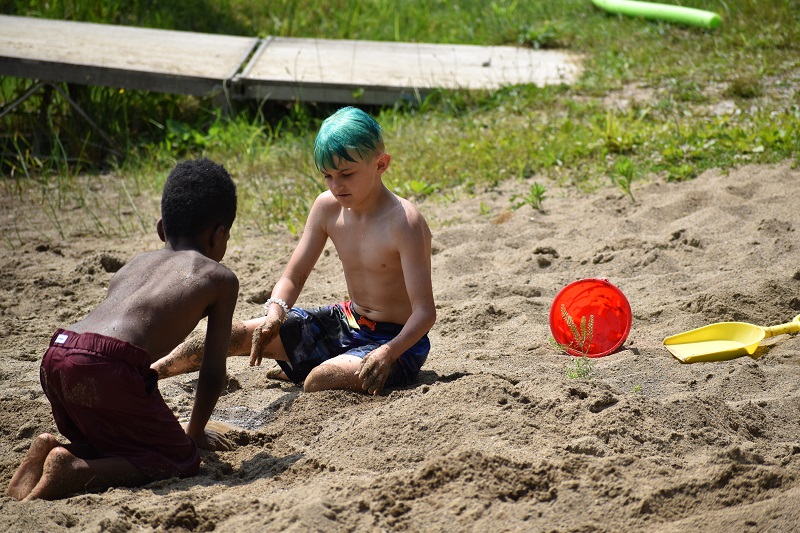
Kars4Kids: Your mission statement speaks of outdoor learning experiences. That’s a little unusual for a summer camp. What made Happy Hollow decide to make summer camp about learning, rather than simple recreation?
Steffany Stoeffler: With so many factors—both internal and external—affecting a child’s well-being, growing up can sometimes be a confusing, tumultuous time. With that in mind, we have created outdoor educational programs specifically to help teach youth how to make responsible choices and adopt healthy behaviors.
Our structured programs allow for safe environments and camp takes children out of the difficult situations they often face in their daily lives. This positive camp environment allows children to experience the outdoors and fosters an intentional space for them to learn and to grow. Campers are encouraged to adopt a healthy and fit lifestyle through the many activities and sports introduced to them at camp. Through their successful participation in new activities, campers gain self-confidence and knowledge that they can use to make positive decisions, overcome obstacles, and accomplish personal goals. These are skills they can take with them when they return to their communities and apply to their daily lives, long after summer camp is over.
Kars4Kids: What can you tell us about your Nature Center? What kind of activities take place there?
Steffany Stoeffler: The Nature Center is the gateway to introducing our campers to the natural world around them. It is a small building with several taxidermized animals, skulls, bones and books to learn from while at camp. It is a great starting point to learn about the natural world. We are hoping that with the help of generous supporters like Kars4Kids we can continue to expand and make improvements to the Nature Center. Below are some examples of our Nature Center activities but these are not all of the activities:
Animal Adaptations – 1st – 12th grade
(1 – 3 hours) Form a hypothesis as to how different wildlife species survive by observing their habitats, tracks and signs. Determine how limiting factors affect wildlife populations. Observe and identify different wildlife adaptations and the functions of those adaptations.
Animal Night Experience – 1st – 12th grade
(1.5 hours) Students explore the natural world at night by participating in activities on a night hike. Familiarize students with different nocturnal animals and identify adaptations they have to help them survive. By learning the biology of some nocturnal animals, students will have a better understanding of those animals, relieving fear and conquering some myths. Students will discuss population curves/cycles to see how limiting factors affect an ecosystem.
Aquatic Life – 1st – 12th grade
(1 – 3 hours) Explore the aquatic areas of camp and learn about the niches they occupy. Examine characteristics and adaptations of aquatic life specimens. Utilize research and resources to obtain information about aquatic life specimens and habitat (i.e. identification, common habitat, life cycle, water quality, etc.).
Astronomy – 1st – 12th grade
(1 – 2 hours) Learn about the nature of stars and become familiar with the constellations and the different phases of the moon.
Dirt on Dirt – 1st – 12th grade
(1 – 2 hours) Explore and examine a soil habitat. Identify the various factors that affect soil health and erosion.
Forest Ecosystem – 1st – 12th grade
(1 – 2 hours) Define the terms herbivore, omnivore, and carnivore. Define the terms producer, consumer, and decomposer. Identify how energy flows through an ecosystem from the sun to plants to animals and back into the soil. Name at least two strategies animals use to survive.
Geology – 1st – 12th grade
(1 – 3 hours) Name and show examples of the three main classifications of rock: igneous, metamorphic, and sedimentary. Explore various ways that the surface of the Earth changes due to water, wind, glaciers, sedimentation, and tectonic plate theory (earthquakes and fault lines). Demonstrate and/or explain the “rock cycle”.
Invasive Species – 1st – 12th grade
(1 hour) Students will learn what invasive species are, why they are problematic, and how to prevent their spread.
Nature Journaling – 1st – 12th grade
(1 hour) Experience how journaling outdoors can improve observational skills and allow students to practice creative and technical writing several times throughout their stay.
Sensory Night Experience – 1st – 12th grade
(1.5 hours) Encourage students to use all of their senses more fully. Since our eyesight is rendered less effective, the other senses almost naturally attempt to compensate for this loss. Students experience the natural world at night. Relieve a child’s fear of the outdoors at night and create a comfortable atmosphere for the student.
Trees – 1st – 12th grade
(1 – 3 hours) Students will explore the parts and functions of trees. Observe trees in their natural habitat and define characteristics that distinguish tree species. Use creative writing to describe trees.
Wings of the Woods – 1st – 12th grade
(1 – 3 hours) Identify different species by observing their field markings, feeding and other behaviors, and their habitat using binoculars and a field guide. Differentiate between woodland- and aquatic-oriented bird species by observing the adaptations of birds living in wooded and wetland environments. Form a hypothesis regarding a particular bird’s food preferences by observing the shape of its beak and foot.
Orienteering – 1st – 12th grade
(1 – 2 hours) Learn the parts of a compass and how to navigate using direction and distance. Follow basic orienteering courses.
Outdoor Living Skills – 1st – 12th grade
(1 – 2 hours) Learn basic issues surrounding survival in a wilderness situation · Learn basics of food, water, shelter, and warmth.
Skulls, Scat, and Tracks Hike – 1st – 12th grade
(1 hour) Explore the woods at camp and discover signs left by the animals who live in the forest ecosystem.
Kars4Kids: How much planning is required to accommodate the children’s medical needs in sporting activities? Are there certain sports that are more likely to be suited to a wider range of Happy Hollow campers? What are some popular sports at camp?
Steffany Stoeffler: The goal for asthma management is that all kids can do every activity we offer. With the improvement of medicines and tools to control asthma, our staff have little planning required to accommodate the children. However, we prioritize the safety of our campers, and medical staff must be at each activity area when children use it. Sports are an extremely popular activity at camp and there is a slew of them offered; basketball, kickball, Gaga ball, volleyball, soccer, Frisbee, tennis, and the list goes on.
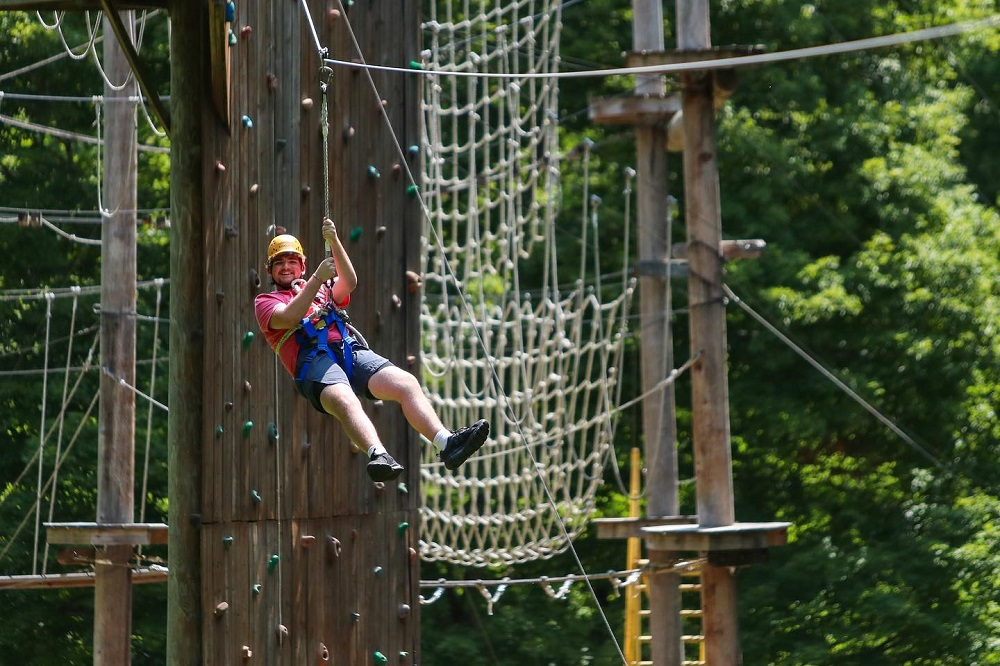
Kars4Kids: What sort of special staff do you require for campers with asthma? Is it kind of a vacation for the staff, getting away from the city and all?
Steffany Stoeffler: For asthma camp, we add respiratory therapists who accompany the kids to all activities, administer their asthma medications (inhalers) and assess them using peak flow meters. We have extra nurses to help with all the other medications and typical childhood stomach aches, bumps, and scrapped knees. We bring a pharmacist along to help organize all the medications. We also have our medical director at camp for the weeklong program.
This is also an experience for both student respiratory therapists and pharmacists who volunteer to come to camp to gain experience with asthma. The seasoned medical staff have all been coming for more than 10 years, some up to 38 years. Many of them will take time off from their work to come to camp. Many of their hospitals support this activity, which is great. The staff feel like they can give back to these kids, while being in a camp and enjoying the outdoors and utilizing their training in a unique way than their usual job.
We do plan an asthma education activity for the week of camp. The medical staff feel like it is now their camp family and look forward to coming every year. A lot of them were college students when they first came to camp. Many medical staff will also volunteer their time supporting Happy Hollow Camp in other ways than just asthma camp week, helping with check-in for other weeks of camp, participating in fundraising activities and camp clean-up programs. We are so grateful for these folks who volunteer their time to make our asthma program successful!
Kars4Kids: Can you describe for us your campground? How large an area does it occupy? What local flora and fauna might the campers encounter there? Is there a lake?
Steffany Stoeffler: We have 855 acres of land in Brown County to explore with a 16-acre lake where kids can fish, swim, kayak, and canoe. Much of our camp is sprawling with traditional native Indiana free growth forest with native Indiana plants. We have many native species of trees, flowers, plants, and animals. Campers can see many woodland animals including squirrels, chipmunks, foxes, deer, beavers, turkeys, many varieties of snake, skinks, skunks, possums, ground hogs, moles, owls, vultures, woodpecker, blue birds, bass, catfish, bluegill, spiders, mice, and a nest of Bald eagles along many others. A fun fact about our lake is that it is so clean that we have a family (we believe the only one in Indiana) of freshwater jellyfish living there!
Kars4Kids: Aside from the Nature Center activities, what other learning experiences does Happy Hollow Children’s Camp offer its campers?
Steffany Stoeffler: We have many other opportunities including archery, team building in our adventure challenge courses, hiking, arts and crafts, zip and zap line, horseback riding, basketball, 9-square, etc. Because we can host a 1:4 staff to kid ratio there is a lot of time for group interactions and activities in the small cabin groups. While living in a cabin group for the week, the campers work on peer-to-peer interaction, community building, negotiation, rule development, patience, and listening skills.
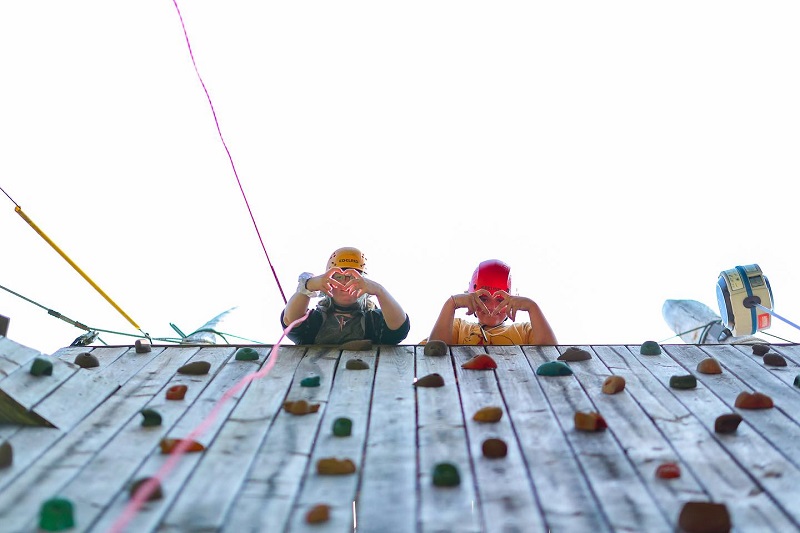
Kars4Kids: What’s next for Happy Hollow Children’s Camp?
Steffany Stoeffler: Happy Hollow is so excited for the future! We recently have undergone leadership changes and a bit of restructuring to support those improvements. In 73 years, Happy Hollow has had 4 Executive Directors, and Sara Noyed is our first female leader in that time. We are proud to still be in operation and grateful for the work this camp has been able to do in that time. However, we are in a prime space for new strategies that will allow us to refine processes and learn to operate in this new landscape. We know youth are experiencing unprecedented things and need to meet the challenges that face them today, giving them the tools to deal with adversity, trauma, and mental health struggles.
In 2023, Happy Hollow was granted an opportunity by MAPT Solutions to redefine that vision, mission, and overall operational strategy. We have spent the better part of this year determining exactly where we are headed next and cannot wait to share this with our partners, but we are not there just yet. So, stay tuned!